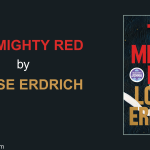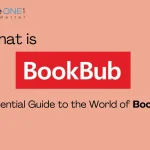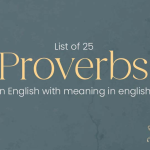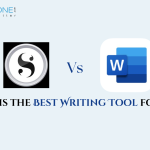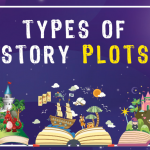Self-publishing offers authors the freedom to bring their literary creations to life without navigating the traditional publishing landscape. However, for many authors, financial considerations are a significant aspect of the self-publishing journey. In this comprehensive guide, we’ll explore the best ways to save on your self-publishing budget, covering key areas such as cover design, editing, formatting, marketing, and distribution.
Read: Who is Jon Fosse? Things to know about Nobel Prize Winner 2023
Cover Design: Affordable Aesthetics
Investing in a captivating book cover is non-negotiable, but it doesn’t have to break the bank. Consider these budget-friendly options:
- DIY Designs: Creating your book cover through do-it-yourself (DIY) methods is an accessible and cost-effective option, especially for those with graphic design skills or the willingness to learn. Platforms like Canva and Adobe Spark offer user-friendly interfaces with pre-designed templates, simplifying the design process. These tools provide a range of customization options, allowing you to choose from various layouts, fonts, and images. While DIY designs may require some time and effort, they provide creative control and can be a satisfying option for authors looking to add a personal touch to their covers.
- Pre-made Templates: For authors seeking a balance between cost efficiency and professional design, pre-made cover templates are a valuable resource. Numerous online platforms offer a variety of templates at affordable prices. These templates are designed by professionals and cover a range of genres and styles. Authors can choose a template that aligns with their book’s theme and then customise elements such as text, images, and colors. This option saves time compared to creating a cover from scratch and ensures a polished and cohesive design. While not as personalised as a custom design, pre-made templates provide a visually appealing and budget-friendly solution for authors.
- Freelance Designers: Hiring a freelance designer offers a professional and tailored approach to book cover design. Platforms like Fiverr and Upwork connect authors with skilled designers who provide services at various price points. Freelance designers bring expertise and creativity to the table, working closely with authors to understand their vision and genre requirements. This option is ideal for authors who prioritise a unique and high-quality cover but may not have the design skills themselves. While costs can vary, many freelance designers offer competitive rates, making professional cover design accessible to a wide range of authors.
Editing: Professional Polishing on a Budget
Editing is a critical step in creating a polished manuscript. Here’s how you can save without compromising quality:
- Beta Readers: Before seeking the services of a professional editor, engaging beta readers is a valuable step in the writing process. Beta readers are individuals who read your manuscript before it undergoes professional editing. They offer subjective feedback on various aspects such as plot, characters, pacing, and overall appeal. This initial feedback can be instrumental in identifying strengths and weaknesses in your work, giving you insights into areas that may need improvement. Beta readers provide a fresh perspective, helping you gauge the effectiveness of your storytelling and identify blind spots that you, as the author, might have missed. By addressing these aspects with beta reader input, you can potentially reduce the workload for a professional editor, making the editing process more focused and cost-effective.
- Editing Software: Editing software tools like Grammarly and ProWritingAid serve as valuable companions in the self-editing phase. While they are not substitutes for professional editors, these tools can significantly enhance your manuscript by catching grammatical errors, suggesting improvements in sentence structure, and offering insights into your writing style. They provide real-time feedback, helping you refine your prose and ensure a higher level of clarity and coherence. Integrating these tools into your self-editing process is a cost-effective way to elevate the overall quality of your writing before it reaches a professional editor. This not only streamlines the editing process but also contributes to a more polished manuscript from the outset.
- Affordable Editing Services: Exploring affordable editing services on platforms like Reedsy or hiring freelancers on Fiverr can be a budget-friendly approach to getting professional editing assistance. Many experienced editors offer their services at discounted rates, especially for basic editing needs. These services often include proofreading, copy editing, and sometimes even developmental editing. While rates may vary, it’s essential to review editors’ profiles, sample work, and client reviews to ensure they align with your specific requirements. Affordable editing services provide an opportunity for authors with budget constraints to access professional editing expertise without compromising on the quality of their final manuscript.
You may also like: International Publishing: Expanding Your Reach Beyond Borders
Formatting: Streamlining on a Shoestring
Formatting your book for different platforms is crucial for a professional look. Save on formatting costs with these strategies:
- Self-Formatting: Self-formatting is a cost-effective option for authors looking to publish their work independently. Platforms like Kindle Direct Publishing (KDP) provide step-by-step guides and resources to help authors format their manuscripts for digital publication. While it requires time and attention to detail, self-formatting allows authors to retain full control over the layout and appearance of their e-books without incurring additional costs. By following the guidelines provided by these platforms, authors can ensure that their books meet the specifications required for various e-reading devices, contributing to a seamless reading experience for their audience. While it may involve a learning curve, the knowledge gained from self-formatting can be a valuable skill for future projects.
- Free Formatting Tools: Authors can take advantage of free formatting tools offered by platforms like Reedsy and Draft2Digital. Reedsy’s Book Editor and Draft2Digital’s formatting service are user-friendly tools designed to simplify the formatting process for e-books. These tools often include features that help authors create professional-looking layouts, ensuring that their books are compatible with different e-book platforms. While not as robust as professional formatting services, free tools provide a practical and cost-free solution for authors who want to achieve a polished appearance for their e-books without delving into the intricacies of manual formatting. Utilising these tools can save time and effort while maintaining a high standard of presentation.
- Templates: Downloading free or low-cost book formatting templates compatible with popular publishing platforms is another approach to streamlining the formatting process. These templates, often available for programmes like Microsoft Word or Adobe InDesign, come pre-designed with the necessary specifications for e-book publication. Authors can simply input their content into these templates, ensuring proper formatting and layout. Using templates is a time-saving option that helps authors avoid the complexities of starting from scratch. Additionally, templates contribute to maintaining a professional and consistent look throughout the e-book. This option strikes a balance between the control offered by self-formatting and the convenience of using pre-designed layouts.
Marketing: Maximising Impact with Minimum Spend
Effectively marketing your book doesn’t have to be a costly endeavor. Consider these budget-friendly marketing strategies:
- Social Media Engagement: Leveraging social media platforms is a cost-effective way for authors to connect with their audience and establish a robust online presence. Platforms like Facebook, Twitter, Instagram, and others offer authors a direct channel to interact with readers, share updates, and build a community around their work. By creating engaging content such as book teasers, behind-the-scenes glimpses, or author insights, authors can foster meaningful connections without any financial investment. Active participation in relevant online communities, book groups, or writing forums further enhances visibility and helps in building a loyal readership organically. The key is consistency and authenticity in sharing content that resonates with the target audience.
- Email Marketing: Starting an email newsletter is a powerful tool for authors to keep their readers informed and engaged. Free platforms like Mailchimp provide basic services, allowing authors to manage and grow their subscriber lists without incurring initial costs. Email newsletters serve as a direct communication channel, delivering updates on book releases, promotions, and personal author insights. As an author’s subscriber list expands, some email marketing platforms offer cost-effective paid plans with additional features. Building and nurturing an email list is an invaluable asset, providing a direct line of communication with readers who have expressed interest in the author’s work. This targeted approach enhances the effectiveness of promotional efforts and fosters a sense of community among readers.
- Cross-Promotion: Collaborating with other authors in the same genre for cross-promotions is a mutually beneficial strategy that doesn’t involve additional costs. Authors can team up to promote each other’s work to their respective audiences, expanding reach and exposure without financial investment. This strategy relies on reciprocity, where each author introduces the other to their audience through social media shoutouts, newsletter mentions, or joint promotions. Cross-promotion is a powerful way for authors to tap into new reader bases, leveraging the trust and interest that existing fans have in their genre. This collaborative approach is not only cost-effective but also fosters a sense of community and support within the author community.
You may also like: Strategies for Effective Book Recommendations in Publishing
Distribution: Reaching Readers Worldwide on a Budget
Ensure your book reaches a global audience without compromising your budget.
- Amazon KDP Select: Enrolling your e-book in Amazon KDP Select involves granting Amazon exclusive distribution rights for a specified period. While this exclusivity limits your e-book’s availability on Amazon’s Kindle platform, it comes with potential benefits. The primary advantage is enhanced visibility through promotional tools like Kindle Countdown Deals and free promotions. Additionally, e-books enrolled in KDP Select are included in Kindle Unlimited, Amazon’s subscription service, allowing readers to access your book as part of their subscription. This can lead to increased earnings, especially if your book resonates with Kindle Unlimited subscribers. Authors should weigh the pros and cons of exclusivity based on their marketing strategy and target audience.
- Print-on-Demand Services: Opting for print-on-demand (POD) services, such as KDP Print or IngramSpark, is a cost-effective solution for authors looking to offer physical copies of their books. Unlike traditional publishing, POD eliminates the need for upfront printing costs and a large inventory. When a reader places an order, a copy is printed and shipped, allowing authors to fulfil demand without the financial risks associated with bulk printing. This on-demand model is particularly beneficial for self-published authors or those with niche audiences. It ensures that copies are produced only when needed, reducing waste and financial investment. POD services provide authors with the opportunity to reach readers who prefer physical books, expanding the overall accessibility of their work.
- Global Distribution Networks: Self-publishing platforms offer global distribution networks that enable authors to reach readers worldwide. Platforms like Amazon and Smashwords facilitate the distribution of e-books to various online retailers, bookstores, and libraries, increasing the potential reach of your work. This broad distribution is crucial for expanding your book’s availability beyond a single platform and tapping into diverse reader markets. Authors can leverage the convenience and reach provided by these distribution networks to connect with readers in different regions and maximise the discoverability of their books. While each platform may have specific distribution agreements, the overall goal is to make your e-book accessible to a global audience, fostering a broader readership and potential success.
Read: What is Allegory in Literature? Meaning, Definition & Examples of Allegory.
Self-publishing on a budget is not only feasible but can also be a rewarding experience. By leveraging affordable resources, engaging with your audience, and strategically investing in key areas, you can create a professional and marketable book without draining your financial resources. Remember, the key lies in finding the right balance between cost-saving measures and maintaining the quality that will captivate your readers.
Publish your book with BlueRoseONE and become a bestselling author. Don’t let your dream of becoming an author fade away, grab the opportunity now and publish your book – be it fiction, non fiction, poetry or more.








